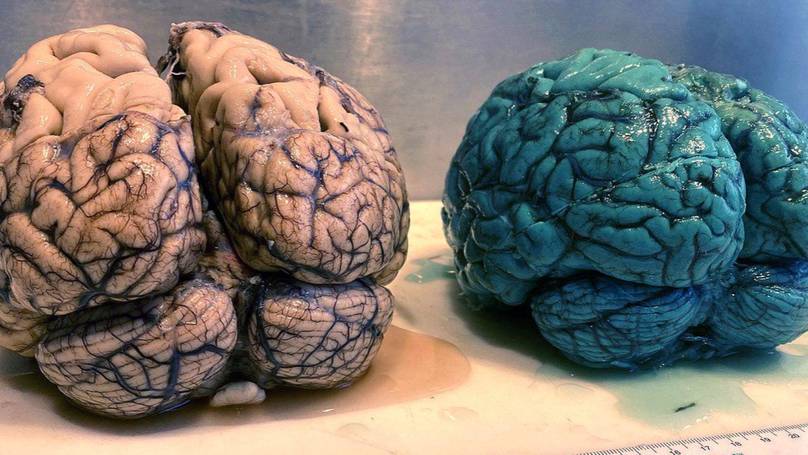Mystery Pill Turns Patient’s Brain Blue: Doctor Uncovers Shocking TikTok Trend Consequence
Warning: this article isn’t your usual brain-boosting hype piece—things get graphic real quick. So, have you ever scrolled through TikTok wondering if that so-called ‘limitless pill’ might actually turn you into a genius? Well, brace yourself and think twice before popping what some call ‘brain fuel.’ This mysterious concoction, methylene blue—a dye that’s been moonlighting since the 1800s—has recently gone viral thanks to influencers claiming it’s the ultimate hack for mental clarity and longevity. But here’s the kicker: a doctor shared jaw-dropping images showing what this blue stuff did to a patient’s brain… and it looks like something straight out of a sci-fi flick. It’s intriguing, it’s bizarre, and it definitely makes you question if a blue-tinted brain is something you really want. Dive into the story if you dare—but don’t say I didn’t warn ya. LEARN MORE
Warning: This article contains graphic images
If you’ve ever been tempted by the so-called ‘limitless pill’ trending on TikTok, you might think twice after seeing what it did to a patient’s brain after he was administered the substance.
Various influencers and celebrities have taken to the app to share their experience of taking the substance, which has commonly been referred to as ‘brain fuel.’
The solution in question is a synthetic industrial dye called methylene blue, which was originally developed as a textile dye in the 1800s, but was later found to have medical benefits and was used to treat malaria.
Over the years, the substance has been used to treat a number of medical maladies, including a rare blood disorder called methemoglobinemia, but more recently it has been adopted by influencers claiming it’s one of the ‘best kept secrets in biohacking’ and can be a ‘game changer for mental clarity and longevity’.

Methylene blue has boomed in popularity recently, thanks to it being referred to as a ‘limitless pill’ on social media (Getty Stock Image)
However, a doctor has shared a bizarre photo showing the brain of a patient who had been administered methylene blue before his death, and the outcome is mind-blowing.
Doctor Mikael Häggström, creator of the WikiJournal of Medicine, shared gruesome photos of the blue brain, next to a normal presenting brain, to highlight the unusual discolouration caused by the blue industrial dye.
In the days before the patient’s death, he had been administered 74ml of 0.5 percent methylene blue for vasoplegic syndrome; a condition where the blood vessels become too dilated, leading to very low blood pressure.
The patient’s cause of death is unknown.
Meanwhile, the National Library of Medicine refers to the discolouration of the brain as ‘pistachio’ or ‘avatar’ brain, and refers to the case of a 68-year-old man who was treated with methylene blue for sepsis.

The brain turned blue after the patient was treated using methylene blue (Wikimedia Commons)
Several days later, the patient sadly passed away and an autopsy revealed the discolouration of several of his organs, including the lungs, heart, kidneys and brain.
It’s suggested that the blue-green tinge is caused when a clear, inactive form of the drug, called leucomethylene blue, turns into its blue-coloured form after coming into contact with oxygen in the air after the patient has passed away.
There have been several health claims in recent years, with a Chinese study from 2020 suggesting it could help Alzheimer’s. Meanwhile, a 2011 study found evidence that methylene blue could improve symptoms of bipolar disorder.
Other unsubstantiated claims include benefits to staving off jet lag and reducing the speed of ageing.

The patient’s brain, compared to a normal presenting brain (Wikimedia Commons)
Despite these often widespread beliefs, experts have regularly warned against using the substance for anything other than its intended medical use, at the hands of a professional.
Neuroscientist Anne-Sophie Fluri told the Daily Mail: “Without solid evidence in humans, these claims are at best speculative and at worst potentially dangerous.”
Experts have reportedly found that recreational use of the substance can lead to serious complications, including seizures or destruction of red blood cells in vulnerable people.
“The brain is not a machine you can casually ‘optimise’ like a smartphone,” Fluri added.
Anything that can make your brain look like blue bubblegum should probably be avoided unless advised by a doctor.













